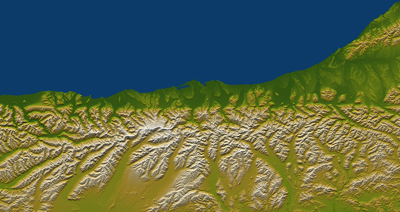As almost all earthquakes happen on faults, having a good map of active faults really helps predict where earthquakes will happen. GNS Science maintains a database of active on-land faults in New Zealand, you can check out the interactive version here.
Unfortunately, creating an accurate map of all the faults in an area is not as simple as it sounds. The Earth’s history spans billions of years, and even on the best-preserved faults (such as the Alpine Fault) there is only evidence for the last few thousand years, which is just the blink of an eye in our planet’s lifespan.

New Zealand Active Faults Database. Source: GNS Science



